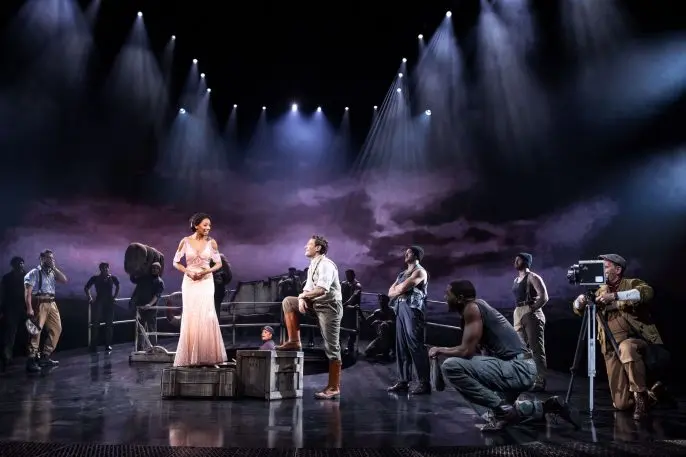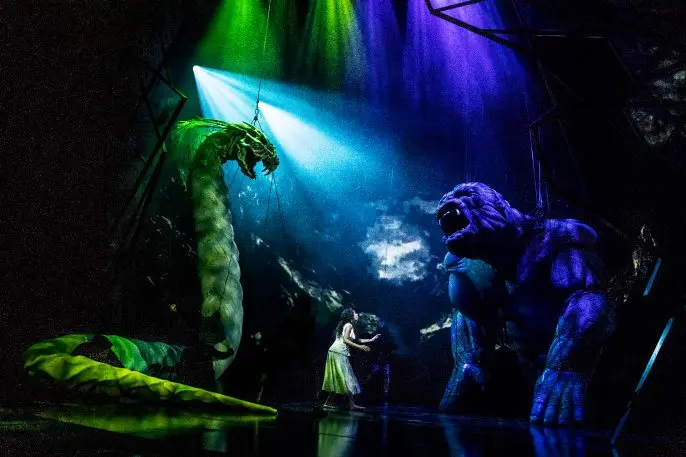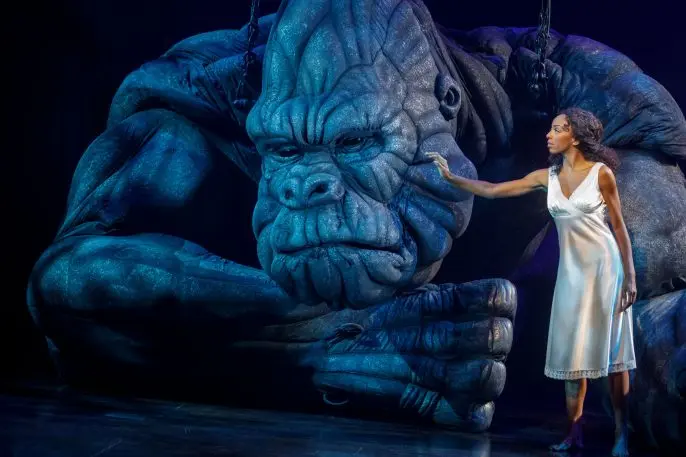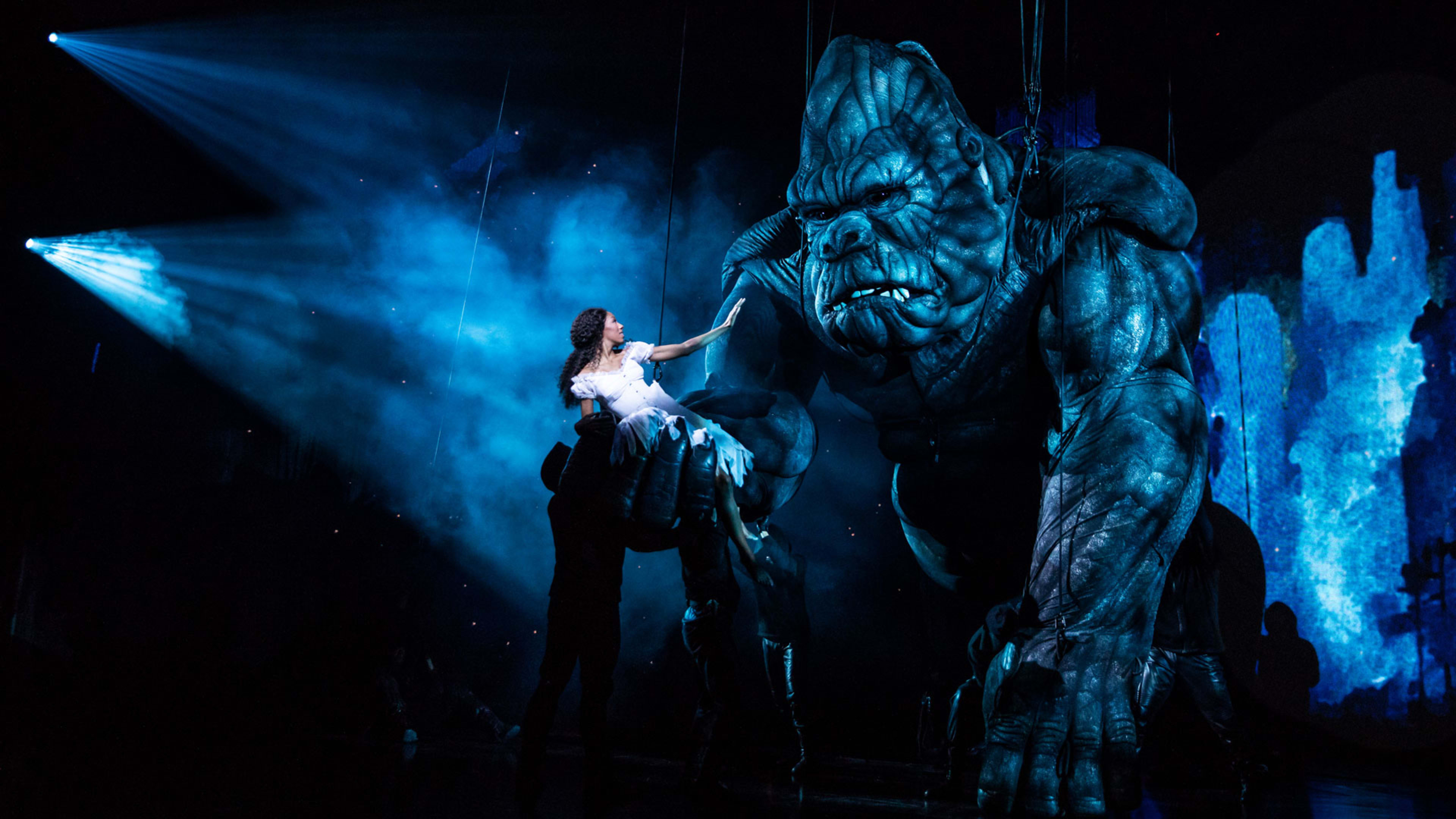The thing about chest beating that nobody tells you is it’s all in the wrists. It takes a tricky balance of flexibility and strength to pull off this animalistic ritual of male aggression, and if the hands are too floppy, well, that just won’t cut it.
Floppy hands were among the early technical challenges encountered by Sonny Tilders and his Australia-based creative team when they were constructing prototypes for the title character of King Kong, the long-gestating musical that finally opened on Broadway this week after spending some five years in redevelopment. The simian centerpiece of this big-budgeted spectacle is a 20-foot-tall marionette gorilla, complete with sculpted muscles, a skeleton of steel, onboard hydraulics, an army of acrobatic puppeteers, and an expressive palette of high-tech animatronic facial expressions, powered by the same servo motors used by NASA’s Mars Rover.

“We knew that it couldn’t be just a big marionette puppet,” Tilders told me. “We needed more control, to be able to layer other things in there. We wanted to make sure that people started to believe it was a five-ton creature that has power and strength.”
Kong’s wrists, to bring it back around, had to be nimble, and lightweight enough so that the puppeteers could pick them up and move them around. But they also needed enough rigidity to handle a pivotal scene in which Kong triumphantly beats his chest after a confrontation with another beast.

None of it would be very convincing if Kong didn’t also sound the part, and in fact the range of his vocal expressions—courtesy of sound designer Peter Hylenski—may be among the show’s most striking technical feats. A “voodoo” puppeteer acts out Kong’s voice in real time, live from a soundproof booth, delivering a symphony of digitally enhanced snorts and grunts, and producing thundery roars that flood the auditorium until your eardrums buzz.
A new hope for animatronics
For Tilders, the journey to bring Kong to life began more out of necessity than some kind of Peter Jackson-like obsession with the 1933 monster movie classic. Trained in graphic design, he made the leap to prop building earlier in his career and ultimately fell in love with animatronics design. In the early and mid-2000s, he worked on TV and film projects, like the Syfy series Farscape and Star Wars: Revenge of the Sith. But it didn’t take a crystal ball to see that the film world, at that time, was moving away from animatronics and toward computer-generated effects.

An opportunity to further his craft presented itself in live entertainment, when Tilders came on board to lead the design team behind Walking With Dinosaurs, an arena show that features an assortment of realistic prehistoric creatures. Tilders recalls a flash bulb moment during the making of that show in Melbourne, circa 2006, when he realized his pivot to live theatrical productions was the right one. As it happened, Spike Jonze was directing his movie adaptation of Maurice Sendak’s Where the Wild Things Are at the same time, also in Melbourne. Tilders recalls the large animatronic heads created by the Jim Henson Creature Shop, many of which didn’t end up making it into the film.
Related: Animatronic Abe Lincoln got his start as an enemy combatant
“They were amazing, but they proved to be quite heavy, and for whatever reason they just ended up shooting just the stunt heads, which didn’t have any animatronics in them,” Tilders recalls. “It just breaks your heart because of all that beautiful work that goes into these things, and it just felt like another nail in the coffin for animatronics.”
Fortunately for Tilders, Walking With Dinosaurs proved to be an enduring success, and the beginning of a fruitful partnership between his workshop, Creature Technology Company, and Global Creatures, the production company behind King Kong. The two also collaborated on How to Train Your Dragon: Live Spectacular, further proving their aptitude for collaborating on complex, large-scale animatronic puppets.
These days, Creature Technology Company does not want for work, thanks to a growing base of consumers in search of live experiences. While the craft of animatronics may have been written off years ago by movie directors—and audiences—who prefer the smoothness and predictability of CGI, Tilders’s workshop is busier than ever creating creatures and characters for theme parks and exhibitions, in addition to stage shows. (Media giants like Disney and NBCUniversal have also redoubled their theme-park investments in recent years as profits from cable television have proved more and more elusive.)
It’s job security, if nothing else. “The point is, you can’t replace live events with pixels, and if you do, people will feel cheated,” Tilders says. “The reason you come to a live event is to see live real things.”
A long-awaited debut
But it’s in King Kong, which opened Thursday at the Broadway Theatre—one of Broadway’s biggest houses—that Tilders and his collaborators have been able to see the culmination of a years-in-the-making dream. In theater circles, the journey to get Kong on a New York stage has taken on a somewhat mythical air. It’s been more than half a decade since an earlier version of the musical first opened in Melbourne, only to be redeveloped with a new creative team and updated story.
The new version features a score by Marius de Vries, songs by Eddie Perfect, and a book by Jack Thorne. As you might imagine, it largely follows the plot of the Merian C. Cooper movie, in which a giant ape is captured on a remote island, brought back to Depression-era New York City, and meets a calamitous death on the top of the Empire State Building.

[Photo: Joan Marcus]
But these elements would play more truthful if they didn’t feel as if they were crafted by committee. Despite all those years in development, or maybe because of them, Kong still feels like a great ape in search of a great show.
Shortcomings may not matter if King Kong can survive without winning over Broadway snobs, and it very well might if word of mouth turns it into a must-see event for audiences in search of a genuine wow factor. Kong definitely has that, and despite it not succeeding as a musical on its own terms, I find myself rooting for its success anyway, if only because it so adeptly makes you feel like you’ve forged a real bond with a beautiful beast.
Recognize your brand’s excellence by applying to this year’s Brands That Matter Awards before the early-rate deadline, May 3.
